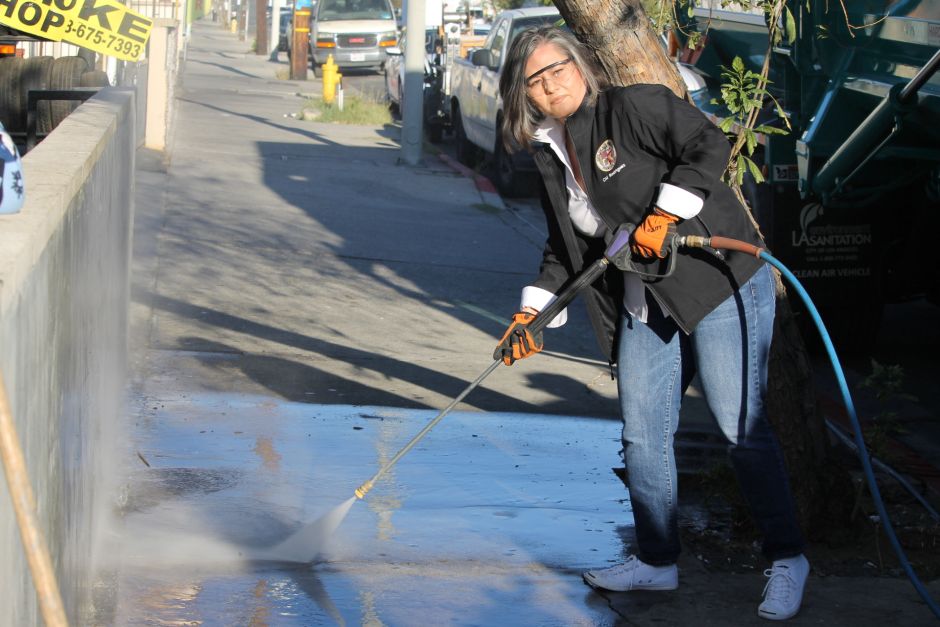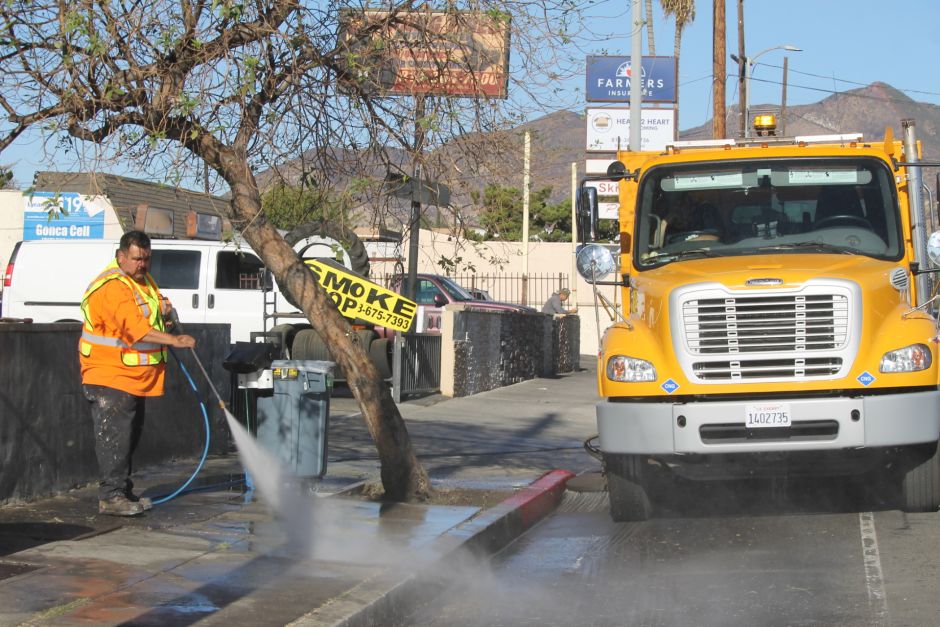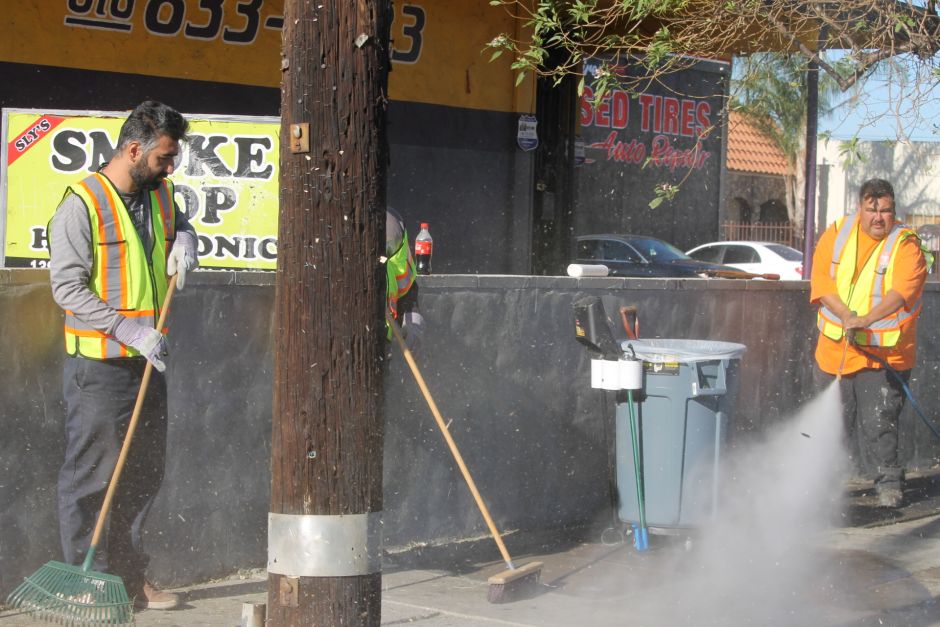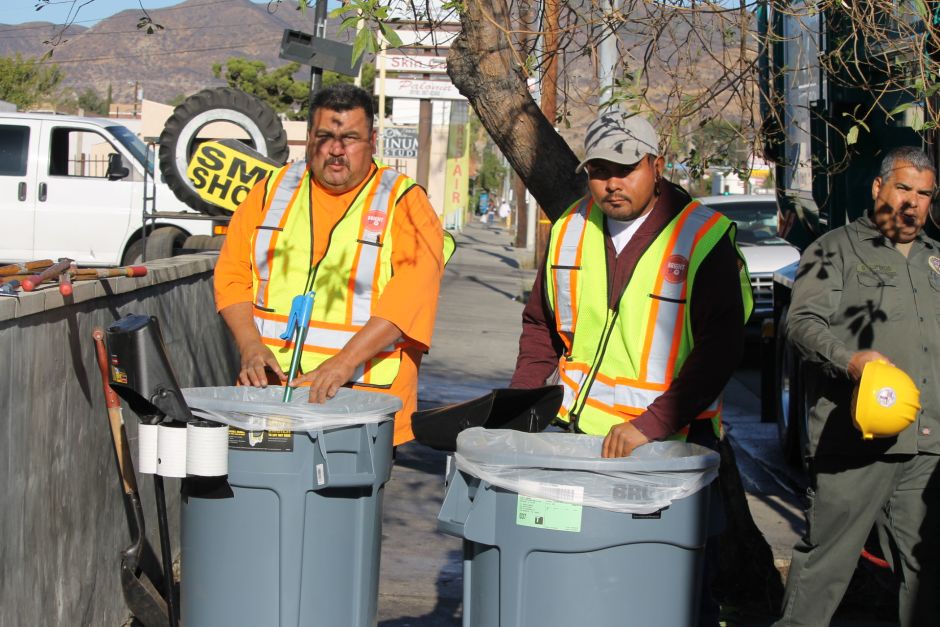Councilwoman Monica Rodriguez wants to turn the image of the neighborhoods she represents in the Los Angeles council
Sheathed in denim jeans, with tennis shoes and protected with glasses and gloves, Councilwoman Monica Rodriguez, who represents District 7 of Los Angeles, put on Friday the sample to clean a bench with hose and water under pressure at the height of the block 13280 of Foot Hill Boulevard, in Sylmar.
In that place, the council began the call “Operation Bright Spot: Strategic Partners more cunning than garbage”, an initiative to clean sidewalks, cut weeds, eliminate graffiti and end garbage in the main commercial corridors in the northeast of the San Fernando Valley.
“This program is a collaboration between city departments, including the Department of Sanitation and Streets and the Northeast Graffiti Busters organization,” said the official, during the start of cleaning activities.
Through the neighborhood-specific cleaning program, members of the Operation Bright Spot team will sweep streets, paint red curbs, remove weeds, pick up bulky items, take off gum and perform pressure washing of sidewalks.
The councilor unveiled The opinion that the Bright Spot program, for which it obtained $ 200,000 in funds, complements the city's existing services and allows faster times for services provided to businesses and residents of District 7, which extends into Pacoima neighborhoods, Lake View Terrace, Mission Hills, North Hills, Sunland-Tujunga and Sylmar.



Free help
For his part, Fidel Vázquez, who has been a community inspector for seven years and is a member of the Pacoima Beautiful group, said that many people think they will charge him money if he calls 311 of the city to help him with the removal of garbage.
"Get ready," he told Sylmar residents. "You already pay for the service with the monthly charge you receive to pick up the garbage from your neighborhood."
In fact, Vázquez called on his fellow citizens "to be part of the solution" in cleaning the neighborhoods, calling the office of Councilwoman Rodriguez, at (818) 485-0600, or visiting Sylmar's office, located in the 14117 Hubbard Street # D1, in Sylmar, California, 91342.
"Just as the streets are dirty, one can also call 311 to report litter," he said, and repeated that people have to lose the fear that they have to pay extra money, "because the service is already paid in their monthly bills of $ 130 ”.
Mrs. Nadia Abrica, owner of the Mama Licha's restaurant, announced that while clean-up efforts are commendable, city officials should also listen and give responses to restaurant workers about the health and safety hazards posed by street food vendors, causing a lot of trash in the streets.
“Every night we see taquerías everywhere; they use fire without any care, throw litter and there are no hygiene rules in what they do and the Health Department shines for their absence, ”he said.

"In the Restaurant Association of Southern California we are not against them or against anyone, we just want their activities to be regulated because they do not have access to bathrooms, sinks and even place their positions next to gas stations."
José “Pepe” García, assistant director of the Solid Resources Operations Group in the Department of Sanitation and Environment of the city of Los Angeles, said the cleaning campaign also has a focus on businesses that do not have legal disposal services of garbage.
"Many businesses illegally dispose of garbage," he said. “For example, in downtown Los Angeles – especially in the area of plant products – business owners pay a homeless person to throw the garbage where they want, but when we discover them, to get rid of the problem they give away who were given the order to dispose of the garbage illegally. ”
He added that each business has to take responsibility for the proper disposal of the garbage it generates.
"In this area of the northeast of the San Fernando Valley, the problem refers to the landfill, cement or, for example, in San Pedro, are the tires of vehicles," he said. "People get used to throwing garbage in a place for no one to see, but we have a way of investigating who is responsible."
Garcia reported that in the city of Los Angeles there are “yards” or corralones where 700 truckers carry 1,000 to 1,200 tons of garbage per day that are generated in each of the five areas of the city of Los Angeles: East Valley, West Valley , West Los Angeles, North Central and South LA / Harbor.









